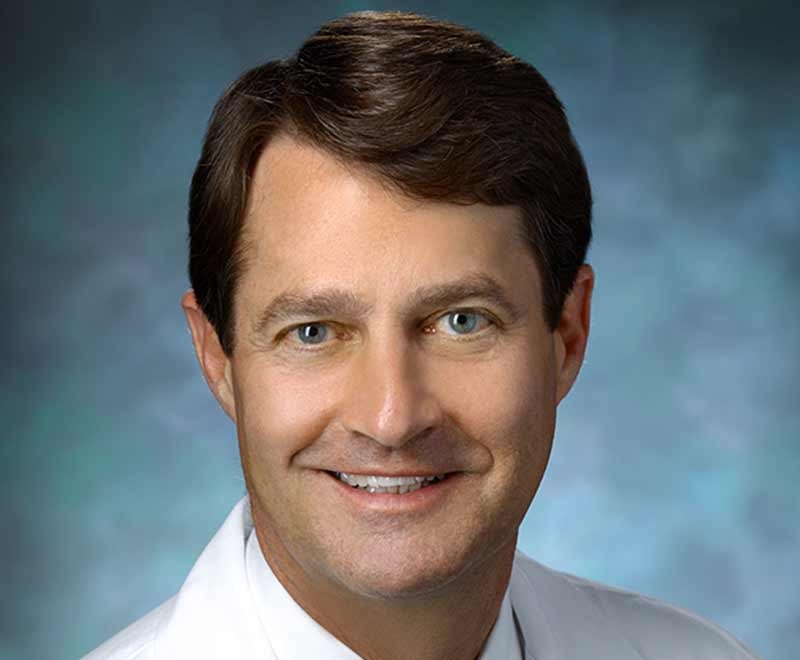The Johns Hopkins Department of Otolaryngology-Head and Neck Surgery offers specialized care in the diagnosis and treatment of diseases affecting the ear, nose, throat and head and neck region.
Recent News Releases
Past Department Directors
The Department of Otolaryngology–Head and Neck Surgery got its start in medicine and at Johns Hopkins much like the specialties of urology, orthopedic surgery, neurosurgery, and radiology. The specialty was a creation of the perceptive vision of William Stewart Halsted, one of the four founding physicians of The Johns Hopkins Hospital. Read more about our past directors below:
-
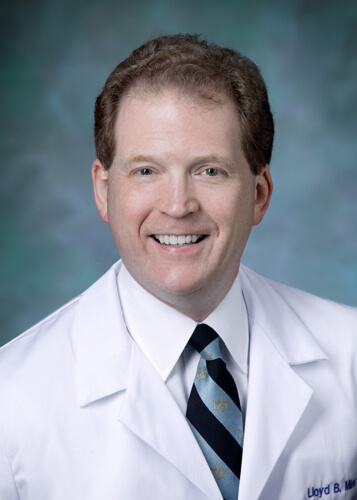 Lloyd B. Minor, M.D., who joined Hopkins in 1993 as an assistant professor, had been director of the department’s Laboratory of Vestibular Neurophysiology, working to advance understanding of how the body perceives head motion and maintains balance.
Lloyd B. Minor, M.D., who joined Hopkins in 1993 as an assistant professor, had been director of the department’s Laboratory of Vestibular Neurophysiology, working to advance understanding of how the body perceives head motion and maintains balance.He also was professor of otolaryngology–head and neck surgery, of biomedical engineering and of neuroscience, and director of the otology and neurotology fellowship training program. Under his leadership, the research program grew from two staff members to 13 and now brings in more than $800,000 per year in grant support. On the clinical side, he and his colleagues are involved in more than 2,000 patient visits, 1,000 vestibular tests and 200 procedures per year.
In 1998, Minor and his colleagues linked tiny perforations in skull bones to a rare disorder, called superior canal dehiscence syndrome, in which loud noises can suddenly cause dizziness. After making the discovery by studying abnormal eye movements in these patients caused by loud noises, he devised a surgical procedure to correct the anatomical problem.
He also is known for treatment of Meniere’s disease, a syndrome involving dizziness, hearing loss, and ringing or pressure in the ears. Using gentamicin, an antibiotic that shuts down key cells in the balance system, Minor and his colleagues disable the balance system in one ear. The drug, given by injection into the ear, has proven effective in 90 percent of cases, usually with little or no hearing loss.
Born in Little Rock, Ark., Dr. Minor received his bachelor’s degree in biology from Brown University in 1979 and his medical degree from Brown in 1982. He completed his two-year core surgical residency at Duke University, followed by a four-year postdoctoral research fellowship in vestibular physiology and a residency in otolaryngology – head and neck surgery at the University of Chicago. He then was a clinical fellow at The Otology Group and The EAR Foundation in Nashville, Tenn.
Dr. Minor is currently the dean of Stanford University School of Medicine and was previously the provost and senior vice president for academic affairs of The Johns Hopkins University.
-
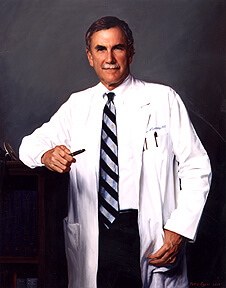 Dr. Charles Cummings received his BA in 1957 from Dartmouth College, his MD in 1961 from the University of Virginia and completed his Otolaryngology- Head and Neck residency at Harvard in 1968.
Dr. Charles Cummings received his BA in 1957 from Dartmouth College, his MD in 1961 from the University of Virginia and completed his Otolaryngology- Head and Neck residency at Harvard in 1968.Dr. Cummings was in private practice in Boston until 1976, was an Associate Professor at SUNY until 1978, served as Chairman of the Department of Otolaryngology -Head and Neck Surgery at the University of Washington until 1990, and from 1991 to present is Andelot Professor and Chairman, Department of Otolaryngology -Head and Neck Surgery at Johns Hopkins.
Dr. Cummings is senior editor of the Comprehensive Text of Otolaryngology- Head and Neck Surgery published by Mosby and has authored two surgical atlases, laryngeal and head and neck surgical assessment. Currently he is past-president of the American Society for Head and Neck Surgery and has served of the Board of Director of the American Board of Otolaryngology for 13 years.
Additionally, he is a past-president of the Association of Academic Departments of Otolaryngology, American Academy of Otolaryngology -Head and Neck Surgery, American Bronchoesophagological Society, and Association Academic Departments of Otolaryngology- Head and Neck Surgery. He has served as chairman of Residency Review Committee for Otolaryngology- Head and Neck Surgery and Chairman of Advisory Council for Otolaryngology to American College of Surgeons. Currently he is Chairman of Hospital Staff at Johns Hopkins Hospital.
Dr. Lloyd B. Minor succeeded Dr. Cummings as chairman of the department in 2003.
-
 Dr. Michael Johns came to Johns Hopkins in 1984 from the University of Virginia to be chairman of the Department of Otolaryngology- Head & Neck Surgery. Trained as a head and neck oncologic surgeon, he received joint appointments in the departments of oncology and neurological surgery. As Chair of the department of otolaryngology head and neck surgery, Dr. Johns developed a small department into the largest academic department of otolaryngology-head and neck surgery in the country and one with a premier research faculty.
Dr. Michael Johns came to Johns Hopkins in 1984 from the University of Virginia to be chairman of the Department of Otolaryngology- Head & Neck Surgery. Trained as a head and neck oncologic surgeon, he received joint appointments in the departments of oncology and neurological surgery. As Chair of the department of otolaryngology head and neck surgery, Dr. Johns developed a small department into the largest academic department of otolaryngology-head and neck surgery in the country and one with a premier research faculty.In partnership with chairmen of the departments of biomedical engineering and neurosciences, Dr. Johns created the Center for Hearing Sciences, a multidisciplinary research center that examines the fundamental training program for clinical and basic science trainees interested in clinically relevant research to support the broad discipline of otolaryngology- head and neck surgery. In 1986 he also was named Associate Dean of the entire medical faculty as well as the responsibility for planning and developing the new Johns Hopkins Outpatient Center. The Johns Hopkins Outpatient Center geographically and organizationally combines the major components of the faculty's ambulatory practice and supports the move from autonomous practices to an integrated multidisciplinary group practice.
During this period he was instrumental in creating The Clinical Practice Association, which represents the full time faculty practice and introduced steps that began the repositioning of the faculty practice as an integrated group practice. A specialist in the management of head and neck tumors, Dr. Johns achieved an international reputation as a cancer surgeon. He made major innovative contributions to the field of skull base surgery and published over 150 papers and chapters in scientific journals and books on a range of issues that dealt with the epidemiology, diagnosis, staging, treatment and outcome of head and neck cancer.
Dr. Johns became a leading spokesman on the reform of the nation's health care system, and is particularly noted for his innovative ideas for the reform of medical and postgraduate medical education, and for his leadership in efforts to define and enhance the role of the academic health center in our changing health care system. He was recognized for his leadership in advocating and supporting service linkages to communities and community providers. Dr. Johns spoke widely on these topics and was actively involved at the highest levels in deliberations with the Clinton Administration on proposed reforms in the health care system.
Dr. Charles W. Cummings succeed Dr. Johns as chairman.
-
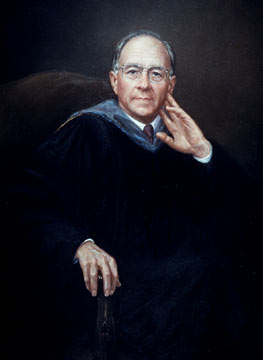 Dr. George Nager arrived at Johns Hopkins in 1952 from his native Switzerland, where he completed his university and medical degrees. The son of an otolaryngologist, he came here for a second residency and began working closely with Stacy Rufus Guild, an associate professor of otolaryngology and an internationally known expert on the inner ear. Together, the two worked to expand America’s first temporal bone collection from autopsies. This repository of temporal bones, in which the inner ear is housed, led to a wealth of new discoveries about diseases that affect this anatomy.
Dr. George Nager arrived at Johns Hopkins in 1952 from his native Switzerland, where he completed his university and medical degrees. The son of an otolaryngologist, he came here for a second residency and began working closely with Stacy Rufus Guild, an associate professor of otolaryngology and an internationally known expert on the inner ear. Together, the two worked to expand America’s first temporal bone collection from autopsies. This repository of temporal bones, in which the inner ear is housed, led to a wealth of new discoveries about diseases that affect this anatomy.Over the course of his career, Nager made significant contributions to a variety of ear disorders both common and rare, including osteosclerosis, an abnormal bone growth in the middle ear that can lead to hearing loss, and Minor’s syndrome, a thinning or absence of the temporal bone that can cause hearing and balance problems. He became chair of the department in 1969, a role he held until his retirement in 1984. Dr. George Nager was succeed by Dr. Michael M.E. Johns as chairman.
Even then, Nager didn’t rest on his laurels; he continued to conduct research on inner ear diseases that affect hearing and equilibrium. He maintained memberships in the American Otological Society, which restricts membership to 100 living members, and the Collegium Oto-Rhino-Laryngologicum Amicitiae Sacrum, a society that accepts only 20 clinical members from the United States.
-
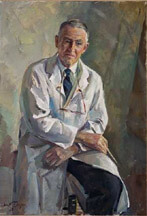 John E. Bordley was born at the Johns Hopkins Hospital, of an old Baltimore family with a strong tradition of medicine at Johns Hopkins. His father was a member of the Johns Hopkins Department of Ophthalmology and his brother was trained in surgery. He attended the Johns Hopkins School of Medicine, graduating in 1925, and took his residency training under Samuel J. Crowe, M.D. at the Johns Hopkins Hospital.
John E. Bordley was born at the Johns Hopkins Hospital, of an old Baltimore family with a strong tradition of medicine at Johns Hopkins. His father was a member of the Johns Hopkins Department of Ophthalmology and his brother was trained in surgery. He attended the Johns Hopkins School of Medicine, graduating in 1925, and took his residency training under Samuel J. Crowe, M.D. at the Johns Hopkins Hospital.His surgical internship was served with distinction in Australia, New Guinea and the Philippines, meriting three battle stars for his service in the Pacific theater.
After separating from the Service and returning to Baltimore he was appointed Director of the Department of Otolaryngology in June 1952, succeeding Doctor Crowe in that post.
As Otolaryngologist-in-charge at the Johns Hopkins Hospital, he became the second person to hold this prestigious position and the first full-time Chairman of the Department of Otolaryngology in June of 1952. He was also designated the Andelot Professor of Otolaryngology. His teaching at Hopkins spanned 35 years. His work in developing the department was phenomenal. He ran a strong clinical service, and developed an extensive research program, which had an extremely broad base.
Both produced much valuable material and in addition, trained young people who continued in research at Hopkins and other institutions.
In collaboration with William G. Hardy, Ph.D. of the Hearing and Speech Clinic at the Johns Hopkins Hospital, he developed an interdisciplinary approach to the treatment of hearing and speech disabilities. The program developed a firm cooperation between medical care, audiological and speech services which was so successful that Boystown solicited and obtained his cooperation in developing the equally successful Boystown National Institute for Communicative Disorders in Children.Dr. Bordley's research included physiological, experimental and clinical studies on deafness, communications, and rubella (both epidemiological and anatomical studies) and its relation to hearing loss. He participated in the first studies assessing the effectiveness of steroids on allergic rhinitis and nasal polyps and a host of other subjects relevant to the care of the otolaryngological patient. His special interest was always the "rehabilitation of the deaf." Dr. Bordley was succeed by Dr. George Nager.
-
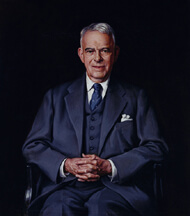 Samuel J. Crowe was born in Virginia, on April 16,1883. He attended Emory College for a year (1901-2) and then transferred to the University of Georgia, from which he received his B.A. degree in 1904. He wished to become an engineer but was prevailed upon by his father to study medicine instead. He entered the Hopkins Medical School in 1904 and obtained his degree in 1908.
Samuel J. Crowe was born in Virginia, on April 16,1883. He attended Emory College for a year (1901-2) and then transferred to the University of Georgia, from which he received his B.A. degree in 1904. He wished to become an engineer but was prevailed upon by his father to study medicine instead. He entered the Hopkins Medical School in 1904 and obtained his degree in 1908.Immediately upon graduation, he was appointed assistant in surgery and assigned to work with Harvey Cushing on the pituitary gland in the Hunterian laboratory. At the end of the year, he was appointed assistant resident surgeon and was in charge of the neurosurgical cases under Cushing's supervision, serving in that capacity for a year (1909-1910). He then returned to the Hunterian laboratory to resume work on the pituitary with Cushing, who by this time had accepted a call to go to Harvard as professor of surgery.
Crowe was training for neurosurgery, when in 1912, he as tapped by Halsted to implement the substance of a report concerning the development of the field of otolaryngology. Becoming an otolaryngologist almost overnight, he brought distinction and luster to that field for forty years.
By 1914, laryngology, as it was then designated, was an organized subdivision of surgery, with Crowe on a geographical full-time basis as head. Harry R. Slack was his principal assistant. Crowe published his first paper in this field in 1917 in The Johns Hopkins Hospital Bulletin; the subject was the relation of tonsillar and nasopharyngeal inflictions to general systemic disorders.
Although he was never a prolific writer, a number of his papers were landmarks in the field. It was not until 1920 that the first assistant resident surgeon for laryngology, John W. Baylor, was appointed, but from then on the yearly rotation list contains many now well-known names in the field. John W. Baylor, Edwin N. Broyles, Leroy M. Polvogt, Floyd N. Adams, Jr., John E. Bordley, and Dudley C. Babb remained in Baltimore, as did J. Julian Chisolm, to become valued members of the part-time staff. Broyles for many years was in charge of the bronchoscopic work at Johns Hopkins. A development of great significance occurred in 1924, when the otological research laboratory was established with financial support from the General Educational Board.
The main purpose of this laboratory was the study of deafness, and Stacy R. Gould, a Ph.D. who had formerly been associate professor of anatomy at the University of Michigan, was brought to Hopkins to direct the laboratory.
In 1927, the General Education Board made a gift of $15,000 annually for five years on condition that a like sum be raised by the University. Generous contributions from the duPont family among others enabled the Medical School to raise this money. The grant was renewed by the Rockefeller interest in 1932 under the same terms. The fundamental studies of the anatomy, physiology, and pathology of the organs of hearing attracted wide attention and generated a flow of patients with hearing problems to Hopkins.
In 1931-32, Crowe, with the collaboration of Guild and Walter Hughson, presented his work on deafness in one of the Harvey lecture series. Chesney ventured the opinion in 1942 that Crowe's department was the most productive of its kind in the country. It was built almost entirely upon outside grants — many of which were obtained by gifts from Crowe's private patients — a long line of residents and fellows received basic training in problems of deafness through this laboratory.
By 1940 the staff of the laryngology and otology division had increased to twenty-two, including fellows, but all the senior members were part-time except Crowe and the research staff.
After retiring in 1952, Crowe set about writing a history of the Department of Surgery at the urgent request of Alfred Blalock. The manuscript was completed in early November 1955. Only a few hours after its completion, he suffered a massive coronary occlusion, from which he died two weeks later, on November 13, 1955. Crowe was succeeded as head of otolaryngology by Bordley, a favored pupil of his.
Featured Articles
-
Research Advances in Head and Neck Surgery at Johns Hopkins
Researchers gain new insights into circulating tumor DNA tests; incidence oh human papilloma-virus-associated squamous cell carcinoma; outcomes for laryngectomy; and more.
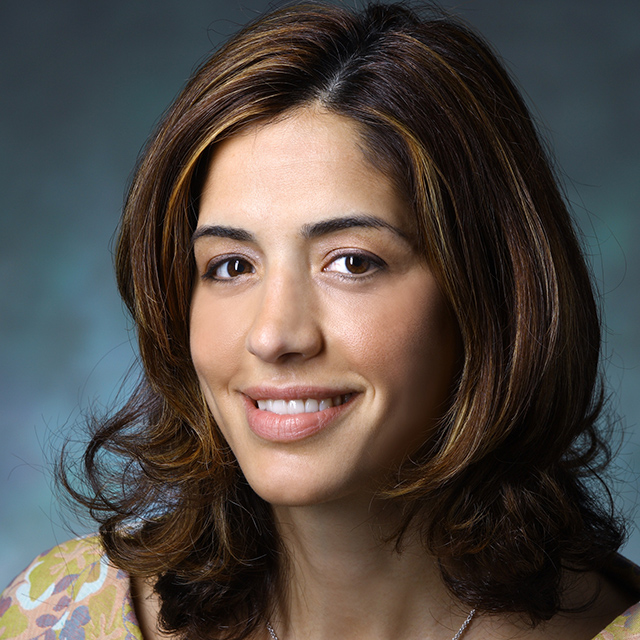
-
Improving Patient Care, From General Dentistry to the Most Complex Craniofacial Reconstructions
Robin Yang leads the Johns Hopkins Division of Oral and Maxillofacial Surgery and Dentistry through growth and change.
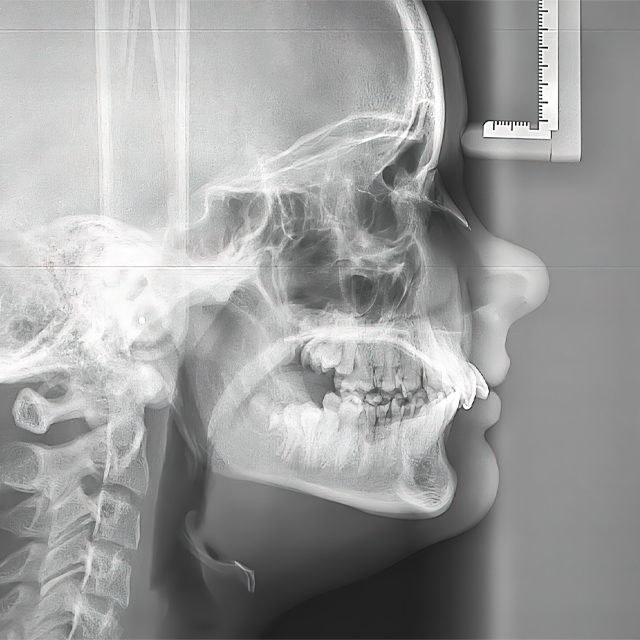
-
Research and Clinical Innovations in Laryngology at Johns Hopkins
Physician-researchers in the Division of Laryngology advance clinical research and practice — leading studies on retrograde cricopharyngeal dysfunction, gender-affirming voice care and more.
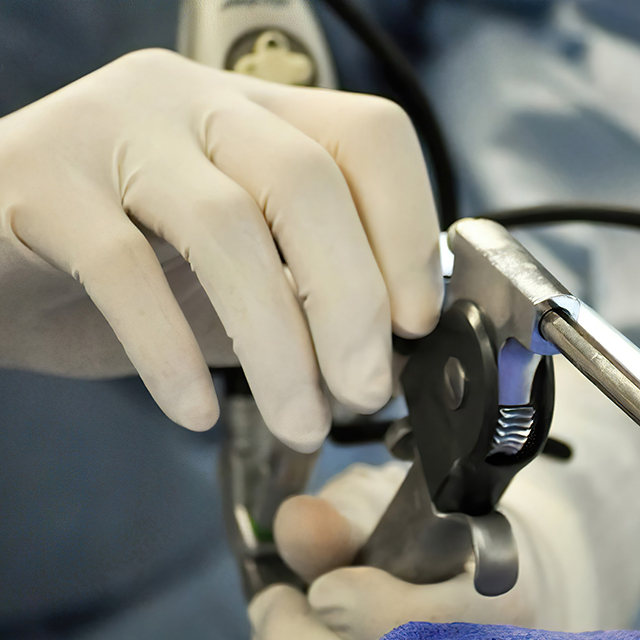
100 Years of Excellence
The Johns Hopkins Department of Otolaryngology-Head and Neck Surgery has been delivering expert patient care and research innovation for over a century. Founded in 1914 by Dr. Samuel Crowe, the department grew from a small group of ear, nose, and throat physicians to an international leader in otolaryngology and head and neck cancer care.




